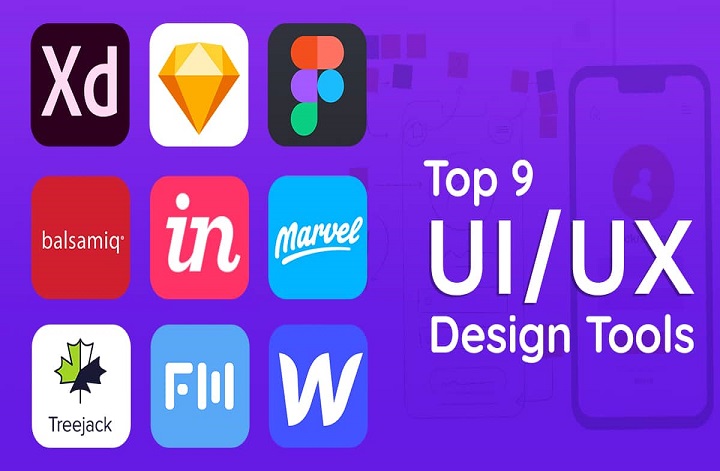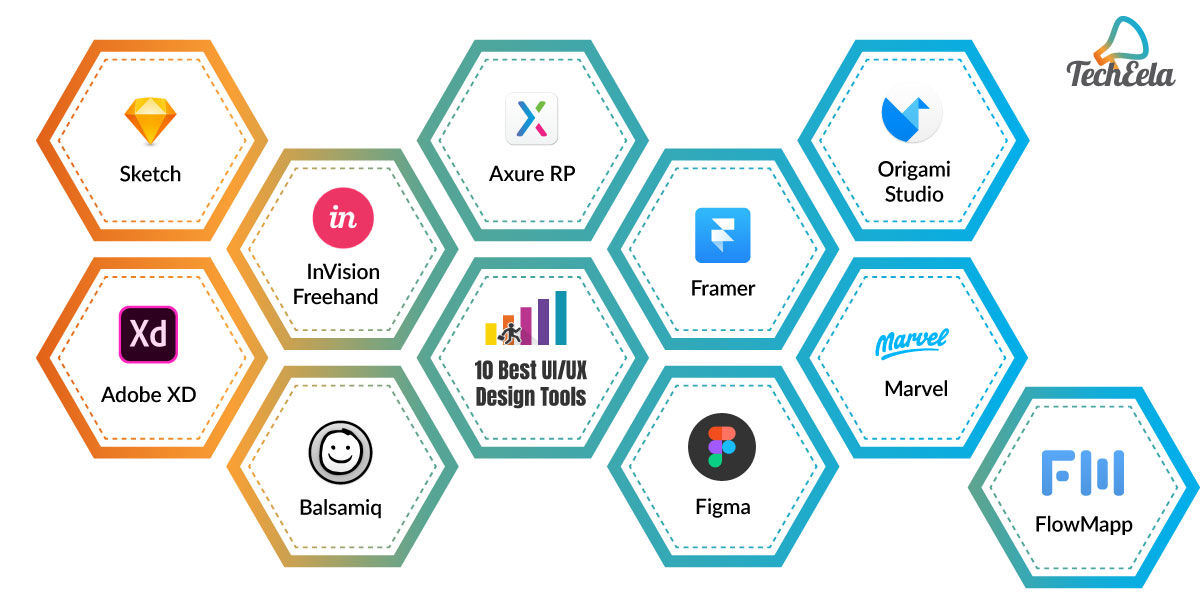Top UI/UX Design Tools for Professionals: A Comprehensive Guide
Exploring the realm of Top UI/UX design tools for professionals, this introduction sets the stage for an informative journey that delves into the significance of specialized tools in the design industry. It highlights the key features to consider and offers insights into well-known design tools that cater to the needs of professionals.
Moving forward, the subsequent paragraph will provide detailed and descriptive information about each tool, shedding light on their unique functionalities and benefits.
Top UI/UX Design Tools Overview
Using specialized tools for UI/UX design is crucial for professionals in the field as it helps streamline the design process, enhance collaboration among team members, and ultimately deliver a better user experience. These tools offer a wide range of features specifically tailored to meet the needs of UI/UX designers, making it easier to create intuitive and visually appealing interfaces.
Key Features to Look for in Design Tools
- Prototyping capabilities for creating interactive mockups and wireframes.
- Collaboration tools to facilitate communication and feedback within design teams.
- User testing features to gather feedback and insights from target users.
- Integration with other design tools and platforms for seamless workflow.
- Responsive design functionality to ensure designs work across various devices and screen sizes.
Well-Known UI/UX Design Tools in the Industry
- Adobe XD: Known for its ease of use, prototyping capabilities, and integration with other Adobe Creative Cloud apps.
- Sketch: Popular among designers for its vector-based workflow, extensive plugin library, and collaboration features.
- Figma: A cloud-based design tool with real-time collaboration, prototyping, and developer handoff capabilities.
- InVision: Offers design collaboration, prototyping, and user testing features to create seamless design workflows.
- Axure RP: Known for its advanced prototyping capabilities, dynamic content features, and robust interactions.
Adobe XD

Adobe XD is a powerful design tool that allows professionals to create interactive prototypes, wireframes, and user interfaces with ease. It offers a range of features and capabilities that streamline the design process and enhance collaboration among team members.
Features and Capabilities
- Artboard layout for designing multiple screens in one project.
- Interactive prototypes with transitions and animations.
- Repeat Grid feature for easy creation of repeated elements.
- Vector drawing tools for creating custom graphics and icons.
- Integration with other Adobe Creative Cloud apps like Photoshop and Illustrator.
Comparison with Other Design Tools
- Sketch:Adobe XD offers a more comprehensive set of features for prototyping and collaboration compared to Sketch. It also integrates seamlessly with other Adobe products, making it a preferred choice for many designers.
- Figma:Figma is a cloud-based design tool that allows real-time collaboration among team members. While Figma excels in collaboration, Adobe XD is known for its intuitive interface and ease of use.
Collaboration and Prototyping
- Adobe XD enables designers to share prototypes with stakeholders for feedback and review.
- Designers can create links to prototypes that can be accessed by team members and clients for testing.
- Coediting feature allows multiple designers to work on the same project simultaneously, enhancing collaboration and efficiency.
Sketch
Sketch is a popular UI/UX design tool known for its user-friendly interface and powerful features that cater to the needs of professionals in the design industry.
Advantages of Sketch for UI/UX design
- Vector-based design: Sketch utilizes vectors, making it easy to scale designs without losing quality, ideal for creating responsive interfaces.
- Symbol libraries: The ability to create reusable components and symbols streamlines the design process and ensures consistency throughout projects.
- Prototyping features: Sketch offers tools for creating interactive prototypes, allowing designers to test user flows and interactions seamlessly.
- Collaboration options: With plugins like Craft by InVision, Sketch enables real-time collaboration and feedback sharing among team members.
Step-by-step guide on creating a design project using Sketch
- Start by creating a new artboard for your project, selecting the appropriate device size or custom dimensions.
- Utilize shapes, text tools, and symbols to design the interface elements, keeping in mind usability and visual hierarchy.
- Organize your layers and group related elements together for easier editing and management.
- Use plugins like Sketch Measure to generate design specifications and assets for developers.
- Preview your design in Sketch or export it for prototyping in tools like InVision or Marvel.
Recent updates or improvements in Sketch for professionals
- Dark Mode: Sketch introduced a dark mode interface option for better visibility and reduced eye strain during long design sessions.
- Improved Performance: Updates have enhanced the overall performance of Sketch, providing smoother interactions and faster rendering.
- Smart Layouts: The addition of smart layouts feature automates the resizing of design elements based on content changes, saving time on manual adjustments.
- Enhanced Collaboration: Updates in collaboration plugins and features have improved teamwork capabilities, allowing for seamless sharing and feedback integration.
Figma

Figma is a popular choice among designers for collaborative projects due to its cloud-based approach, which allows multiple team members to work simultaneously on the same design files in real-time. This feature makes it easy for designers to share feedback, make changes, and stay updated on the progress of the project.
Cloud-based Approach vs Traditional Design Tools
- Figma's cloud-based approach eliminates the need for manual file sharing and version control, as all changes are saved automatically and can be accessed from anywhere with an internet connection.
- Traditional design tools often require designers to work on local files, leading to issues with file compatibility, version conflicts, and the need for constant file transfers.
- With Figma, designers can collaborate seamlessly without worrying about file management, allowing for a more efficient and streamlined workflow.
Enhancing Workflow and Efficiency
- Figma's real-time collaboration feature enables design teams to work together efficiently, reducing the time spent on back-and-forth communication and feedback loops.
- Designers can create design systems and components in Figma, making it easy to maintain consistency across projects and iterate quickly on designs.
- Integration with other tools and plugins further enhances Figma's capabilities, allowing designers to customize their workflow and improve productivity.
InVision Studio
InVision Studio is a powerful tool designed specifically for UI/UX designers to streamline their workflow and create interactive prototypes efficiently.
Key Features of InVision Studio
- Extensive library of design elements: InVision Studio offers a wide range of design elements, such as buttons, icons, and navigation bars, to speed up the design process.
- Animation tools: With built-in animation features, designers can create dynamic transitions and interactions to bring their prototypes to life.
- Collaboration capabilities: InVision Studio allows designers to share their work with team members and clients for feedback and collaboration in real-time.
- Responsive design: Designers can easily create responsive designs for various screen sizes and devices, ensuring a consistent user experience across platforms.
Creating Interactive Prototypes with InVision Studio
InVision Studio simplifies the process of creating interactive prototypes by offering an intuitive interface and drag-and-drop functionality. Designers can easily link different screens, add animations, and create interactive elements without writing a single line of code. This visual approach allows for rapid iteration and testing of design ideas, ensuring a seamless user experience.
Streamlining the Design-to-Development Workflow
InVision Studio bridges the gap between design and development by providing tools for collaboration, feedback, and handoff. Designers can easily share design specs, assets, and animations with developers, allowing for a smoother transition from design to development. This streamlined workflow helps teams work more efficiently and ensures that the final product matches the designer's vision.
Last Recap

In conclusion, this discussion has unraveled the world of Top UI/UX design tools for professionals, emphasizing the importance of leveraging the right tools to enhance design projects. It encapsulates the essence of specialized tools and their role in elevating the design process for professionals in the field.
Expert Answers
What are the key features to look for in UI/UX design tools?
Professionals should prioritize features like ease of use, collaboration capabilities, prototyping tools, and compatibility with design systems.
How does Figma differ from traditional design tools?
Figma's cloud-based approach allows real-time collaboration and seamless sharing of design projects, unlike traditional tools that may require manual file transfers.
What sets Adobe XD apart from Sketch and Figma?
Adobe XD offers a comprehensive platform for design, prototyping, and collaboration, while Sketch and Figma excel in specific areas like vector editing and real-time collaboration, respectively.




